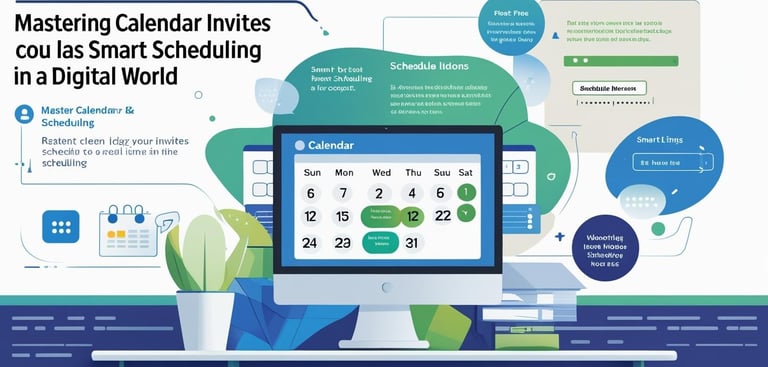Start sending invites for free - no card required - Click here
Why Calendar Invites Are Essential for Modern Scheduling
Time is one of the most valuable resources in both personal and professional life. As we juggle meetings, deadlines, virtual events, and team coordination, one tool has emerged as a quiet yet powerful enabler: the calendar invite.
BLOGS
7/9/20252 min read


Time is one of the most valuable resources in both personal and professional life. As we juggle meetings, deadlines, virtual events, and team coordination, one tool has emerged as a quiet yet powerful enabler: the calendar invite.
In a world where digital interactions dominate, the ability to schedule and manage time with accuracy and ease is critical. Calendar invites offer a seamless way to ensure that people are aligned and organized—no matter their location, role, or time zone.
What Is a Calendar Invite?
A calendar invite is a digital request that allows individuals to add an event to their personal or work calendar. It typically includes:
The event’s name and description
Date and time (including time zone)
A physical or virtual meeting location
A link or attachment, if applicable
Optional alerts or reminders
If you’ve ever wondered what is a calendar invite, it’s essentially a structured digital message that brings people together at a defined time and place, reducing the risk of missed communications.
How to Send Calendar Invites Correctly
Learning how to send calendar invite messages effectively is a key organizational skill. Whether you’re coordinating a small team sync or managing a nationwide training rollout, a well-structured calendar invite ensures:
Timely attendance
Fewer follow-up emails
Instant updates when schedules change
An effective invite includes clear timing, purpose, location or call link, and context for attendees.
Coordinating at Scale with Bulk Invites
As events grow in scale, one-to-one invites become impractical. This is when professionals turn to send bulk calendar invites methods—sending one invite to many recipients at once. It helps standardize communication and reduces administrative overhead.
A bulk calendar approach is often used for internal announcements, all-hands meetings, or recurring training sessions.
Managing Multiple and Complex Calendars
For events spanning multiple days or catering to different audiences, it’s often necessary to send multiple calendar invites. Each invite can be customized with the relevant agenda, time slot, or access link.
Sending multiple calendar invites ensures clarity and prevents overcrowding of calendars, especially when participants are only required to attend specific sessions.
Mass Calendar Invites in O365 Workflows
Large organizations, particularly those using Microsoft Office ecosystems, rely on mass calendar invites in O365 to keep everyone aligned. These systems allow event managers to schedule across departments with one update reflecting everywhere.
This is commonly used for policy briefings, internal reviews, or organization-wide virtual events.
Add to Calendar: A Small Feature with Big Impact
When communicating with attendees outside your organization—like clients or event registrants—providing an add to calendar option ensures they won’t forget. It improves attendance and adds convenience for users who want to integrate events into their preferred calendar application.
Choosing the Right Scheduling Strategy
There’s no one-size-fits-all when it comes to digital scheduling. Consider the following:
Use send bulk meeting invites when everyone is attending the same event at the same time.
Use send multiple calendar invites when the sessions vary by topic, time, or intended audience.
This distinction helps reduce confusion and increases event success rates.
Conclusion
Scheduling is more than logistics—it's about aligning people, priorities, and progress. In this landscape, the calendar invite stands out as one of the most effective tools we have for digital coordination.
Whether you're handling a bulk calendar, running mass calendar invites in O365, or just trying to figure out how to send calendar invite notifications properly, the goal is the same: respect time, build clarity, and stay connected.
BulkCalendar.in
Send Bulk & Mass Calendar Invites Instantly
Contact us
Engagement
sales@letscalendar.com
+44 (0) 203 916 5117
© 2025. All rights reserved.
Help?
